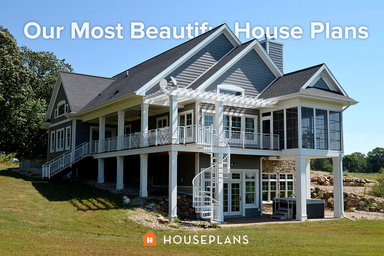Built-in furniture is often associated with modern design, but it has a history that goes back centuries, depending on how you count! I was reminded of this when I recently toured Baldwin Home Museum, the
oldest house still standing in Lahaina on the island of Maui, built by a reverend Ephraim Spaulding in 1834-5 and then expanded by the reverend and medical doctor Dwight Baldwin after 1840, shown here (courtesy Lahaina Restoration Foundation). The Baldwins had very little furniture -- and shipping items from New England, where the Baldwins were from, would have been too expensive, so their house had to incorporate
furniture functions, like this clever drop down desk built into a wall of the doctor's dispensary, and more
typically, this simple, handsome built-in china hutch in the dining room. Built-in shelving, window seats, and inglenook benches became popular features of Shingle and Craftsman style homes in the late 19th and early 20th centuries. That era's Craftsman bungalows, especially, are often full of clever built-in storage and display spaces. And Frank Lloyd Wright seemingly used built-ins everywhere as a way to streamline his
rooms! The idea continues to inspire designers today. Here's an L-shaped window seat, along with a built-in bureau, in Tina Govan and Sarah Susanka's Plan 454-14. Or here's a combined window seat, blanket
storage, and bookshelf surround in Plan 928-4 by Visbeen Architects. Architect Nicholas Lee takes the
seating idea a step farther by designing a U-shaped banquette for his dining alcove in Plan 888-12. And here's an example of a built-in desk that maximizes a mud room entry in Plan 454-12 by Sarah Susanka.
Not so different from some ideas demonstrated in houses -- in Hawaii and elsewhere -- of almost 200 years ago!
oldest house still standing in Lahaina on the island of Maui, built by a reverend Ephraim Spaulding in 1834-5 and then expanded by the reverend and medical doctor Dwight Baldwin after 1840, shown here (courtesy Lahaina Restoration Foundation). The Baldwins had very little furniture -- and shipping items from New England, where the Baldwins were from, would have been too expensive, so their house had to incorporate
furniture functions, like this clever drop down desk built into a wall of the doctor's dispensary, and more
typically, this simple, handsome built-in china hutch in the dining room. Built-in shelving, window seats, and inglenook benches became popular features of Shingle and Craftsman style homes in the late 19th and early 20th centuries. That era's Craftsman bungalows, especially, are often full of clever built-in storage and display spaces. And Frank Lloyd Wright seemingly used built-ins everywhere as a way to streamline his
rooms! The idea continues to inspire designers today. Here's an L-shaped window seat, along with a built-in bureau, in Tina Govan and Sarah Susanka's Plan 454-14. Or here's a combined window seat, blanket
storage, and bookshelf surround in Plan 928-4 by Visbeen Architects. Architect Nicholas Lee takes the
seating idea a step farther by designing a U-shaped banquette for his dining alcove in Plan 888-12. And here's an example of a built-in desk that maximizes a mud room entry in Plan 454-12 by Sarah Susanka.
Not so different from some ideas demonstrated in houses -- in Hawaii and elsewhere -- of almost 200 years ago!






